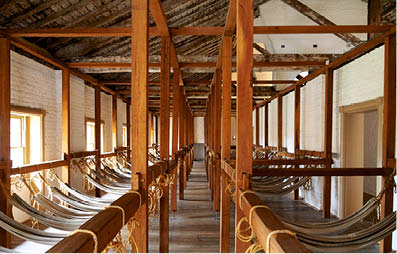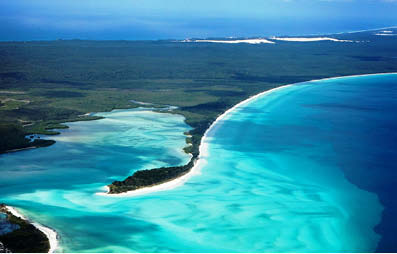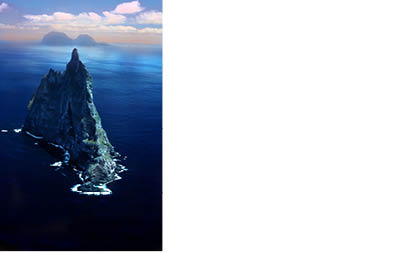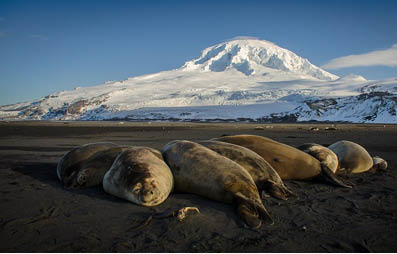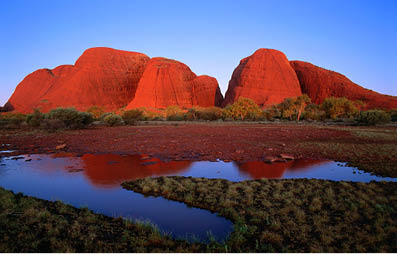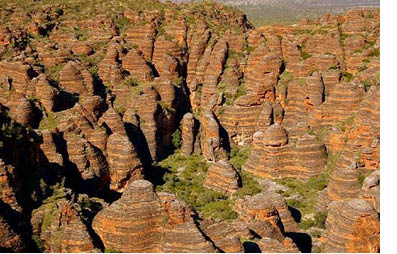– listed cultural and natural attractions
What does the Great Barrier Reef have in common with the Great Wall of China, the Great Smoky Mountains National Park and the ruins of Great Zimbabwe?
All four of these places – and over a thousand others mostly without the word “great” in their titles – are on UNESCO’s World Heritage List.
According to the United Nations body, this makes their protection the common goal of humanity. As its website states, “World Heritage sites belong to all the peoples of the world, irrespective of the territory on which they are located.”

It’s a worthy goal. In the decades since the 1972 Convention Concerning the Protection of the World Cultural and Natural Heritage was adopted, almost every nation on the planet has signed on and submitted its own list of treasures.
So how easy is it for a place to make the list, and how many sites does Australia have in it?
There are two types of World Heritage site: cultural and natural. To be considered, a site must meet at least one of ten selection criteria. These range from “a masterpiece of human creative genius” to “natural habitats for in-situ conservation of biological diversity.”
Submitted sites are evaluated by expert bodies. Once their recommendations are in, the World Heritage Committee decides who makes the final cut.
For Australia, that process has created 19 World Heritage sites. They’re dominated by 16 natural sites, though four of these are joint natural-cultural entries. Regionally, they’re a bit lop-sided: six are at least partly in New South Wales, for example, while Victoria has only one.
From sites in city centres to those in remote locations, they’re an appealing collection of attractions.
Cultural treasures
Royal Exhibition Building and Carlton Gardens
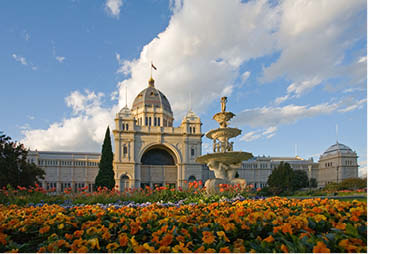
It took until 2004 for Australia to gain its first purely cultural site, this sizeable but elegant building just outside Melbourne’s CBD. Built to host great international exhibitions in the 1880s, the Royal Exhibition Building is one of the few survivors of the golden age of these celebrations of the progress of nations. It also hosted the first session of Federal Parliament in 1901. Seemuseumvictoria.com.au/reb
Sydney Opera House
It’s surprising that it took until 2007 for this iconic building – almost the same age as the World Heritage convention – to get a guernsey. One of the 20th century’s greatest works of architecture, it’s cited in the list for its “creativity and innovation” and its “enduring influence on architecture”. Sitting at the end of Bennelong Point, it’s also a great example of how to meld creativity with natural beauty. See sydneyoperahouse.com
Australian Convict Sites
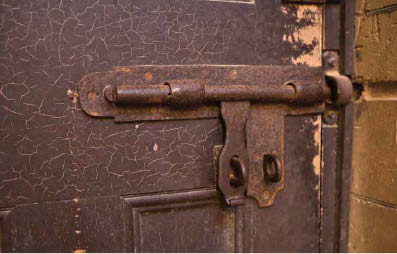
Our genteel ancestors may have blushed at any mention of the “convict stain”, but nowadays we’re more chilled about our roguish ancestry. Not that it’s a light-hearted matter. Spreading from Western Australia via New South Wales and Tasmania to Norfolk Island, these 11 sites tell a dark story of harsh punishment and forced labour in grim conditions. See environment.gov.au/heritage
Islands and reefs
Great Barrier Reef
It may be under threat from climate change, but this vast formation off the Queensland coast is still the world’s largest collection of coral reefs. It qualified for inclusion on multiple criteria, from its stunning scenery to the diversity of its eco-system. There’s a huge array of things to do along the Reef, including diving, snorkelling, swimming, cruising, kayaking and helicopter rides. See cairns-greatbarrierreef.org.au
Fraser Island
At 120km long with 250km of sandy beaches, Fraser is the largest sand island in the world. Inland, its tropical rainforest growing on sand dunes is distinctive, along with its freshwater lakes and dingoes. The vast majority of the island is public land, and visitors enjoy four-wheel driving, camping and hiking. Fraser Island is accessible by ferry or by air. See visitfrasercoast.com
Lord Howe Island
Part of New South Wales, Lord Howe and its neighbouring islands have it all – a volcanic origin, a unique complement of plants and animals, and the world’s most southerly coral reef. The remnant of a 7 million year old shield volcano, Lord Howe is largely a protected nature preserve. It’s popular for birdwatching and aquatic activities, though tourist accommodation is limited to 400 beds. See lordhoweisland.info
Macquarie Island
This Tasmanian island lies 1500km southeast of the Apple Isle, and is the only place in the world where rocks from the Earth’s mantle are exposed above sea level. It’s also home to big population of elephant seals and penguins (both Royal and King), living in a landscape of dramatic cliffs, lakes and beaches. A scientific base is the only human population, though you can visit via occasional tours. See parks.tas.gov.au
Heard and McDonald Islands
Now we’re talking remote. These islands are over 4000km southwest of Perth in the Southern Ocean. They have active volcanoes, including the 2745m high Big Ben, and the local birds, seals and macaroni penguins are uncontaminated by introduced species or permanent human occupation. There are no commercial tours to the islands, with access strictly regulated. Seeheardisland.antarctica.gov.au
National parks
Kakadu National Park
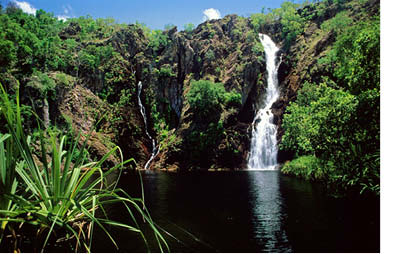
A World Heritage site which is both cultural and natural, Kakadu is a big attraction on both counts. Inhabited by Aboriginal people for up to 50,000 years, its rock art is an insight into life across the millennia. The national park hosts plentiful wetlands and a magnificent rocky escarpment, along with waterbirds, fish, frogs and reptiles – including the ever-popular crocodile. Visitor options include tours, cruises and scenic flights. See kakadu.com.au
Uluru-Kata Tjuta National Park
Uluru, both a natural and cultural listing, is a magnet for tourists from around the world. It’s also part of the belief system of the local Anangu people, with cave paintings indicating their connection to the rock over thousands of years. The area is also home to iconic animals, from kangaroos to echidnas. It’s well set up for visitors with accommodation, tours and a cultural centre. See parksaustralia.gov.au/uluru
Purnululu National Park
The star of this 240,000 hectare national park is the Bungle Bungle Range, a series of curving beehive-shaped sandstone towers. Though indigenous people have lived in the area for millennia, it’s only recently become well-known to outsiders. As it lies 300km south of Kununurra at the very top of Western Australia, it’s still an effort to reach. One of the most popular ways to see it is by helicopter. See westernaustralia.com/kimberley
Coastal
Ningaloo Coast
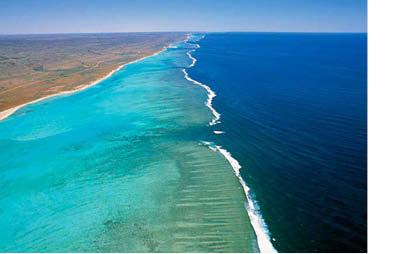
This stretch of coastline in northwest Western Australia comprises a major reef, with caves and other striking formations along its rocky arid shores. Up to 500 whale sharks gather here each year between March and July, and the reef plays home to hundreds of fish, coral and crustacean species. Swimming with whale sharks is one of the biggest visitor highlights. Seewesternaustralia.com/ningaloo
Shark Bay
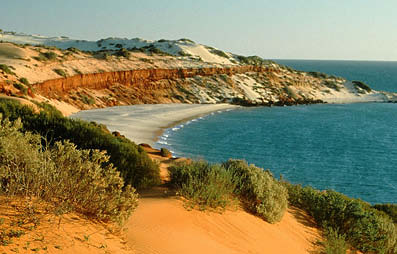
There are more remarkable creatures than sharks in this Western Australian bay’s waters, including enormous seagrass beds and dugongs. Most impressive of all are its stromatolites, three billion-year-old lifeforms which are basically living fossils. Tours can be arranged from Denham or Monkey Mia, which set out aboard a variety of transport: planes, boats, 4WD vehicles, camels and on foot. See sharkbay.org
Wet Tropics of Queensland
This World Heritage stretches 450km along the coast of far north Queensland. It takes in almost 900,000 hectares of tropical rainforest with waterfalls, gorges, beaches and rivers, including the famous Daintree. The forest is home to diverse animal life, providing an essential species for many otherwise threatened species. Walking trails and scenic drives are popular, and there’s accommodation available. See wettropics.gov.au
Forests
Gondwana Rainforests
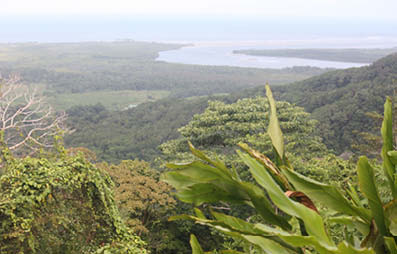
Australia was once part of a vast super-continent called Gondwanaland, and this green arc of rainforest stretching from southeast Queensland to northeast New South Wales contains the evidence: distinctive trees and ferns from the deep past. There are numerous songbird species in the region, including lyrebirds. It’s a popular area to visit by car as it’s easily accessible from Gold Coast or other coastal towns. See environment.gov.au
Greater Blue Mountains Area
One of Australia’s most popular getaway zones, easily reached from Sydney. Its escarpments and gorges contain a wide range of eucalypts and native animals, including the platypus and echidna. There are even survivors from the distant prehistoric past, such as the rare Wollemi pine. A huge selection of walks, tours, accommodation and dining is available nearby. Seevisitnsw.com/blue-mountains
Tasmanian Wilderness
A fifth of Tasmania is included in this World Heritage site, from Cradle Mountain in the north to the Maatsuyker Islands in the south. It’s important for its gorges, wild rivers and temperate rainforest, but it’s also listed as a cultural site because of significant rock art and other evidence of Tasmanian Aboriginal culture. The area is particularly popular for bushwalking, wild water rafting, fishing and camping. See parks.tas.gov.au
Fossils
Fossil Mammal Sites
This fossil-heavy site comprises two locations: Riversleigh, Queensland and Naracoorte, South Australia. Far north Riversleigh has the oldest fossils, including those of now vanished megafauna; while Naracoorte’s stretch to the arrival of humans. Naracoorte is the most accessible of the two, with a fossil centre, cave visits and a dedicated World Heritage tour; though tour operators also head to Riversleigh. See environment.sa.gov.au/naracoorte,nprsr.qld.gov.au
Willandra Lakes Region
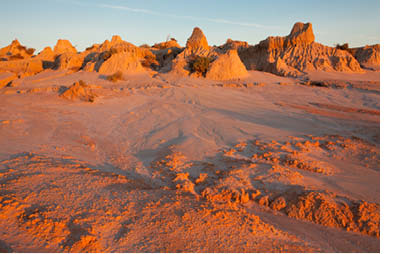
When the water in this lake system in southwest New South Wales vanished some 18,000 years ago, it left behind an important record of climate fluctuations in the soil. As a cultural site, it features incredibly old evidence of human activity, including a 40,000 year old cremation site at Lake Mungo. Tours are available and there’s accommodation in old shearers’ quarters within Mungo National Park. See visitmungo.com.au



